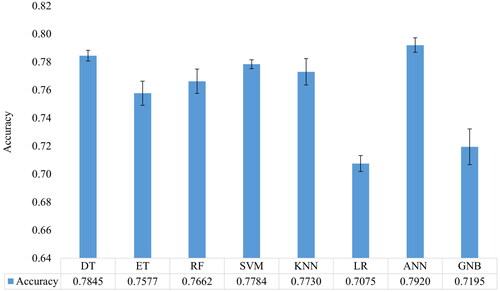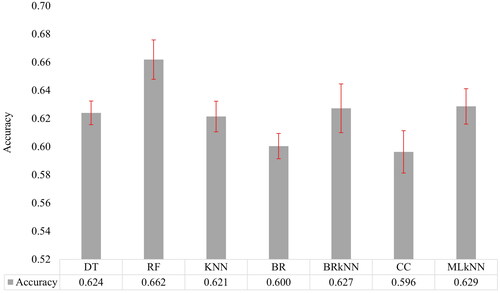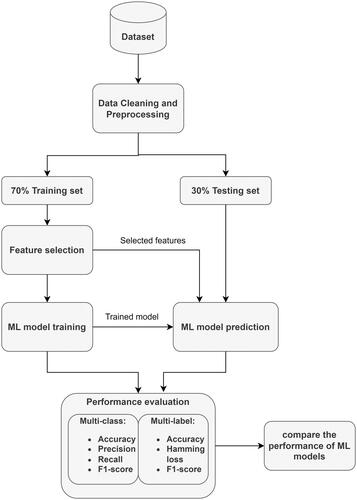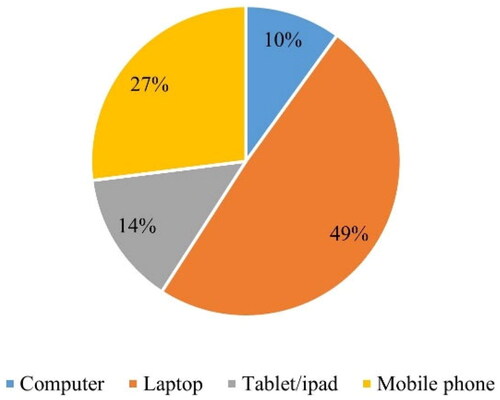Figures & data
Table 1. Related background studies for students’ satisfaction toward online learning.
Figure 2. The constructs used in this study. (a) Interaction, (b) experience, (c) health, (d) usefulness, (e) technical, (f) impact, and (g) teaching style.

Table 2. Tuning parameters for each model in satisfaction classification.
Figure 3. Training performance of ML models based on satisfaction classification. The error bars show the standard deviation. Training is performed by a fivefold cross-validation method.

Table 3. Classification results of satisfaction prediction with feature selection with 30% unseen data.
Table 4. Tuning parameters for each model in emotion classification.
Figure 4. Training performance of ML models based on emotion classification. The error bars show the standard deviation. Training is performed by a fivefold cross-validation method.

Table 5. Classification results of emotion prediction with selected features with 30% unseen data.
Table 6. Comparison of the proposed study with related literature studies.
Table A1. The constructs and related questions of the study.
Table A2. Internal reliability of the constructs.
Table A3. The selected features p value during the BFS method for satisfaction model.
Table A4. The selected features p value during the BFS method for emotion model.
Table B1. Demographic and other details of students.
Data availability statement
The data are not publicly available due to privacy reasons.




